Address
304 North Cardinal
St. Dorchester Center, MA 02124
Work Hours
Monday to Friday: 7AM - 7PM
Weekend: 10AM - 5PM
Address
304 North Cardinal
St. Dorchester Center, MA 02124
Work Hours
Monday to Friday: 7AM - 7PM
Weekend: 10AM - 5PM

Baking up a batch of waffles in the morning can transform a simple breakfast into a delightful treat. The classic waffle maker, with its timeless charm and versatility, has become a staple in many kitchens. Whether you’re craving sweet, fluffy Belgian waffles or savory, crispy creations, this kitchen gadget can cater to your taste buds. In this article, we’ll delve into the intricacies of selecting the perfect classic waffle maker, focusing on key features like non-stick surfaces, uniform grid designs, adjustable temperature controls, and the importance of proper care and maintenance. Let’s explore the world of waffle makers and discover the perfect companion for your morning routine.
Non-stick surfaces are an essential feature that elevate the experience of using a classic waffle maker. These surfaces are engineered to reduce friction and prevent food from sticking, ensuring a smooth and efficient waffle-making process. Here’s a deeper dive into what makes non-stick surfaces so valuable:
The magic behind non-stick coatings lies in their unique composition. Typically, they are made from a thin layer of polytetrafluoroethylene (PTFE), commonly known by the brand name Teflon. This material is known for its exceptional non-reactive nature, which means it won’t leach any harmful chemicals into your food. It’s also highly durable and can withstand high temperatures without breaking down, making it perfect for the heat of a waffle maker.
When you pour your batter onto the surface of a non-stick waffle iron, the smooth texture allows it to spread evenly without any lumps or globs. This even distribution is crucial for creating those perfectly uniform waffles with crisp edges and a light, fluffy interior. Without non-stick surfaces, achieving this consistency would be nearly impossible, and the result would likely be a waffle that’s a war of waffle iron and batter.
The ease of cleaning is another advantage that non-stick surfaces bring to the table. Once your waffle is done, simply scrape the excess batter back into the bowl, and any remaining residue can be easily wiped away with a damp cloth. There’s no need for harsh chemicals or excessive scrubbing, which not only saves time but also reduces the risk of damaging the delicate non-stick coating.
For those who love to experiment with recipes, non-stick surfaces are a game-changer. Whether you’re trying out a new batter recipe or introducing fillings like fruit purees, the non-stick surface ensures that your waffle will release cleanly and maintain its shape without any sticky residue. This is particularly helpful when working with ingredients that have a tendency to stick, such as applesauce or yogurt.
One of the standout benefits of non-stick surfaces is their ability to prevent overcooking. Because the batter doesn’t stick, it doesn’t become overcooked or burnt on the surface, even if you’re working with a higher temperature setting. This feature is especially appreciated when you’re aiming for a perfectly golden-brown waffle with a minimum of effort.
In addition to the practical aspects, the non-stick coating also contributes to the aesthetic of the waffle-making experience. The smooth surface reflects light, giving the waffles a glossy, appealing look that can be quite satisfying to behold. It’s not just about functionality; it’s also about the pleasure of serving a visually pleasing breakfast.
For health-conscious consumers, non-stick surfaces are a welcome addition. They reduce the need for using butter or oil to prevent sticking, which can cut down on the calorie and fat content of your waffles. This feature can be particularly beneficial for those following specific dietary guidelines or simply looking to make healthier choices.
Finally, the longevity of the non-stick coating is a testament to its quality. With proper care and regular cleaning, a non-stick surface can last for years, providing countless waffles with minimal wear and tear. This durability means that your classic waffle maker can be a reliable kitchen staple for many years to come.
In summary, the non-stick surface in a classic waffle maker is a feature that simplifies the waffle-making process, enhances the taste and appearance of your waffles, and makes cleanup a breeze. Its ability to handle a variety of ingredients, maintain even cooking, and contribute to a healthier lifestyle makes it a standout feature that no waffle enthusiast should overlook.

The uniform grid design of a classic waffle maker is more than just a visual feature; it’s the cornerstone of the perfect waffle. This distinctive pattern is meticulously crafted to ensure each waffle is not only visually appealing but also consistently delicious from corner to corner.
The grid is usually composed of a series of parallel lines, meticulously spaced to create a symmetrical pattern. This precise arrangement is not a mere aesthetic choice but a functional marvel. The even spacing allows for the batter to spread evenly across the surface of the iron, ensuring that every square inch of the waffle is cooked to perfection.
The depth of the grid is also carefully considered. It’s not too shallow, which would result in a waffle that’s too thin and might cook too quickly. Nor is it too deep, which could lead to an overly thick waffle that takes longer to cook. The ideal depth provides a balance between a crisp exterior and a tender interior.
The uniformity of the grid pattern is what gives classic waffles their distinct texture. The lines are wide enough to catch and hold the syrup, allowing for that quintessential crispy, sugary shell that’s a hallmark of a great waffle. Yet, the spaces between the lines are not so wide that the waffle becomes a breeding ground for syrup run-off, which can lead to a soggy, less satisfying bite.
One of the key benefits of a uniform grid is the predictability it offers. Whether you’re a seasoned waffle aficionado or a novice in the kitchen, you can rely on the grid to deliver the same result time after time. This consistency is especially important for those who like to serve waffles as part of a breakfast or brunch buffet, where each guest expects a uniformly delicious experience.
Moreover, the grid design plays a crucial role in the cooking process. It allows for even heat distribution, ensuring that the waffle is cooked through without burning the edges. This is particularly important when making larger waffles, as the heat can sometimes be unevenly distributed, resulting in a waffle that’s perfect in the center but overcooked or undercooked at the edges.
The pattern of the grid can vary slightly from one model to another, but the fundamental concept remains the same. Some grids are more intricate, with a finer line pattern, which can result in a waffle with a more delicate texture. Others have a more pronounced grid, which gives the waffle a bolder, more defined structure.
The visual appeal of the grid is undeniable. It’s a design that has been refined over decades, and it’s become synonymous with the classic waffle. It’s not just a pattern on a metal plate; it’s a promise of a delicious breakfast experience.
The uniformity of the grid design also makes it easy to stack and serve waffles. The lines and spaces create natural separators, allowing you to neatly stack your waffles without the worry of them sticking together. This is particularly convenient when you’re serving a crowd, as it makes for a quick and organized presentation.
In the world of waffle makers, the grid design is a testament to the art of simplicity. It’s a design that has stood the test of time, and for good reason. The uniform grid is the backbone of the classic waffle, ensuring that every bite is a delightful reminder of the joy that comes from a perfectly cooked waffle.
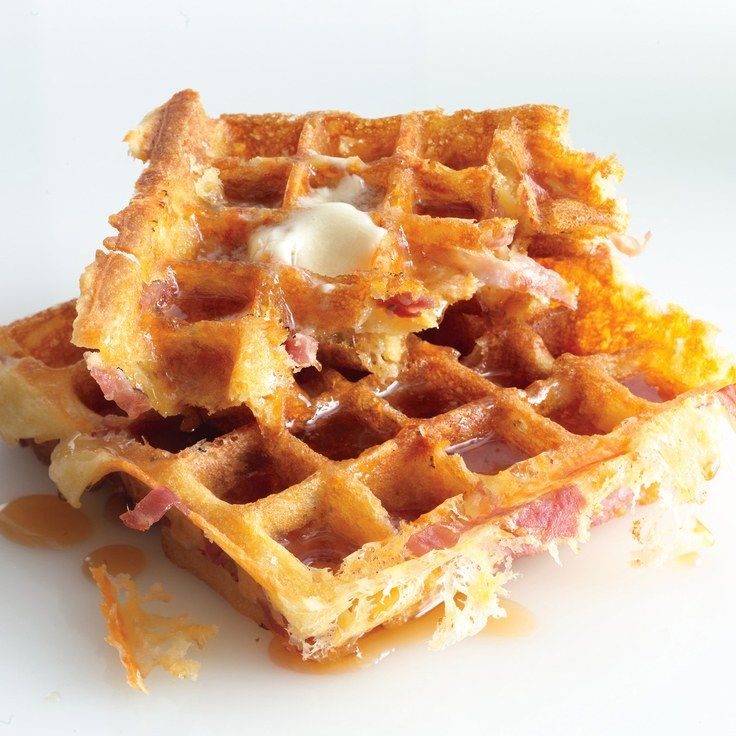
The uniform grid design of a classic waffle maker is more than just a visual appeal; it’s a crucial aspect that shapes the waffle-making experience. The grid pattern is meticulously crafted to ensure that every waffle is not just visually appealing but also evenly cooked from edge to edge.
The grid itself is often made up of a series of parallel lines and intersecting lines that form a perfect square or rectangular pattern. This design is not just about aesthetics; it’s a functional feature that guarantees consistency. Each section of the grid is precisely the same size, which means that when you pour the batter onto the waffle maker, it spreads evenly across the surface. This even distribution is key to achieving those perfectly crisp edges and a uniformly golden brown color.
The uniformity of the grid also means that the heat is distributed evenly across the surface. This is important because it prevents any part of the waffle from becoming overcooked or undercooked. The result is a waffle that’s perfectly balanced in texture, with a crispy exterior and a soft, chewy interior.
The grid pattern also allows for the waffles to be stacked without sticking together. This is particularly useful if you’re making multiple waffles for a crowd or if you’re preparing them in advance for a breakfast buffet. The uniformity of the grid ensures that each waffle maintains its shape and integrity, even when it’s been removed from the waffle maker and placed on a plate or in a container.
In addition to the practical aspects, the uniform grid design also contributes to the visual appeal of the waffle. The clean lines and consistent pattern make for a waffle that looks as good as it tastes. It’s a design that has stood the test of time, appealing to both the eye and the palate.
The grid pattern on a classic waffle maker is also a nod to tradition. It’s reminiscent of the early days of waffle making, where the design was based on practicality and simplicity. The uniformity of the grid was a way to ensure that each waffle was as good as the last, a testament to the craftsmanship of the waffle maker.
Moreover, the grid design can vary slightly depending on the manufacturer and the specific model. Some waffle makers may have a more intricate pattern, with smaller squares or a slightly different arrangement of lines. However, the underlying principle remains the same: to provide a consistent and even cooking surface.
The uniform grid design is also a practical feature for those who like to customize their waffles. Whether you’re making classic Belgian waffles or a more savory version, the grid allows you to pour the batter in a way that ensures the right amount of batter in each section. This control over the batter distribution is essential for achieving the desired thickness and texture.
In terms of maintenance, the uniform grid design makes cleaning a breeze. The flat, even surface is easy to wipe down, and any residue can be easily scraped off with a spatula. This is particularly important for those who enjoy making waffles on a regular basis, as it ensures that the waffle maker stays in top condition for years to come.
The grid pattern also plays a role in the waffle’s ability to hold toppings. The uniformity of the grid means that toppings like syrup, fruit, or cheese can be evenly distributed across the surface of the waffle, enhancing the overall flavor and experience.
In conclusion, the uniform grid design of a classic waffle maker is a feature that serves multiple purposes. It ensures even cooking, allows for easy stacking and storage, contributes to the waffle’s visual appeal, and provides the user with control over the batter distribution. It’s a design that has been refined over time, and it remains a hallmark of quality and functionality in the world of waffle making.
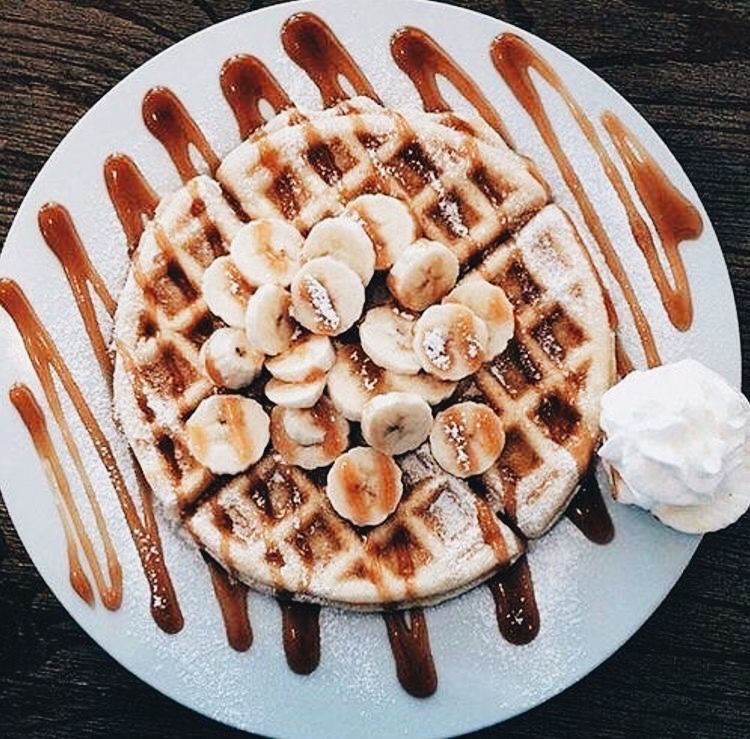
The art of the classic Belgian waffle is a testament to the simplicity and joy found in a perfectly crisp, golden-brown treat. These waffles are more than just a breakfast staple; they’re a canvas for a symphony of flavors and textures.
Imagine the sight of those iconic, intricate patterns that form the grid of each waffle. The Belgian waffle is distinguishable by its large, deep wells, which are perfect for holding toppings like berries, whipped cream, and even slices of banana. The grid design is more than just a visual appeal; it serves a practical purpose. It allows for a thicker, more substantial waffle that holds up well to the heaviest of toppings without becoming soggy.
The texture of a classic Belgian waffle is a blend of crispness and chewiness. The outside is a delightfully crunchy shell, while the inside is tender and slightly eggy. This balance is achieved through the careful blending of ingredients, including a mix of wheat and cake flour, which gives the waffle its characteristic density and richness.
The batter for a classic Belgian waffle is not like your average pancake mix. It’s a blend of eggs, milk, butter, sugar, and a pinch of salt, all whisked together until it’s smooth and slightly frothy. The frothiness is key—it helps to create a light and airy waffle that’s full of pockets of air.
The cooking process is also a science. The batter is ladled onto a preheated waffle iron, which is carefully adjusted to the right temperature. Too low, and the waffle won’t cook evenly; too high, and you might burn the exterior before the interior is done. The perfect waffle is cooked until the steam stops and the waffle releases from the iron with ease, revealing a golden brown surface.
Once removed from the iron, the waffle is a masterpiece waiting to be adorned. The options are endless. You can keep it simple with a dusting of powdered sugar or a drizzle of maple syrup. For a more indulgent experience, consider fresh berries, a generous spread of whipped cream, or a sprinkle of powdered sugar with a touch of cinnamon. The sweetness of the fruit contrasts beautifully with the crispiness of the waffle, while the whipped cream adds a luxurious, creamy texture.
For those who prefer a savory twist, a classic Belgian waffle can be transformed into a hearty meal. A layer of melted cheese, a fried egg, and some crispy bacon or ham can elevate the waffle to a satisfying breakfast or brunch dish. The grid pattern of the waffle holds the ingredients together, making it a meal that’s as much fun to eat as it is to look at.
Belgian waffles are also a favorite for dessert. They can be stacked and layered with chocolate ganache, fresh whipped cream, and a dusting of cocoa powder for a decadent treat. The waffle’s structure supports the weight of the toppings, ensuring that each bite is a perfect blend of sweet and rich.
The beauty of the classic Belgian waffle lies in its versatility. It’s a waffle that can be enjoyed at any time of the day, from a light breakfast to a satisfying dessert. Its size and depth make it a social food, perfect for sharing. Whether you’re a fan of the traditional sweet toppings or looking to experiment with savory combinations, the Belgian waffle is a culinary canvas that never fails to delight.
In the kitchen, the waffle iron is the instrument of this culinary craft. It’s the tool that shapes the batter into perfection, the heat that caramelize the sugars, and the grid that creates the distinctive pattern. The process of making a classic Belgian waffle is almost meditative, a series of steps that lead to a delicious outcome.
And so, each time you take a bite of a classic Belgian waffle, you’re not just tasting a piece of breakfast; you’re savoring a piece of culinary history. It’s a tradition that has been passed down through generations, a comfort food that brings people together, and a simple joy that is easily accessible to all.
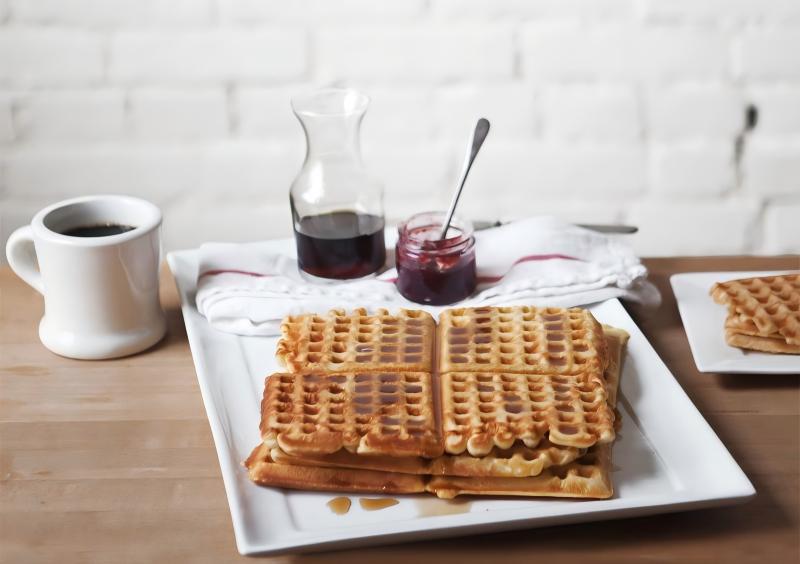
The sweet allure of maple syrup and the burst of freshness from a selection of ripe, juicy fruits create a symphony of flavors that transforms a simple waffle into a delectable dessert. Let’s delve into the art of crafting sweet treats that harmonize these two elements.
Maple syrup, with its rich, amber hue and complex, almost nutty flavor, is a natural sweetener with a depth that transcends the ordinary. When drizzled over a perfectly cooked waffle, it provides a glossy sheen that not only enhances the visual appeal but also sets the stage for a taste experience that’s both indulgent and healthful.
The choice of fruits is as crucial as the syrup itself. Berries, such as strawberries, blueberries, raspberries, and blackberries, offer a tartness that contrasts beautifully with the sweetness of the maple syrup. Their tiny seeds burst with texture, adding a satisfying crunch to each bite. The natural sugars in these fruits meld with the syrup, creating a sticky, gooey surface that clings to the waffle’s crispy edges.
Apples, especially the tart varieties like Granny Smith, can add a delightful tanginess to the mix. Sliced into thin, bite-sized pieces, they become a juicy contrast to the waffle’s golden crispness. The apples’ subtle floral notes are amplified when paired with the caramelized edges of the waffle, turning a simple snack into a sophisticated treat.
Pears, with their sweet, floral aroma, are another excellent choice. Their juicy flesh complements the maple syrup’s richness, and their soft texture allows the flavors to meld seamlessly. The slight acidity of the pear adds a refreshing twist to the dessert, making it feel light and invigorating.
Oranges and tangerines, with their zesty zest and sweet, juicy segments, inject a burst of citrus into the mix. The citrusy fragrance is released as the segments are gently pressed onto the waffle, releasing their essence and creating a zingy counterpoint to the syrup’s depth.
Bananas, when sliced and lightly caramelized, offer a creamy, almost velvety texture that pairs wonderfully with the syrup. The natural sugars in bananas caramelize quickly, creating a sticky, gooey layer that complements the maple syrup’s richness without overpowering it.
Figs, with their sweet, sticky flesh, are a luxurious addition to any waffle dessert. Their natural sweetness requires little more than a light drizzle of maple syrup, as the figs themselves are the star of the show. The soft, almost melt-in-your-mouth texture of figs adds a luxurious touch to the waffle, making it feel indulgent and gourmet.
When preparing your sweet treats, consider the seasonality of the fruits. In the summer, berries are at their peak, offering a burst of flavor and a pop of color. In the winter, apples and citrus fruits provide a comforting sweetness that can warm you up on a cold day.
The presentation of your maple syrup and fruit waffles is as important as the flavors themselves. Arrange the fruits in an artful manner, creating patterns or layers on top of the waffle. Drizzle the maple syrup over the top, allowing it to pool in the grooves of the waffle, creating a visual and textural delight.
For an extra touch, consider using fresh herbs like mint or basil to garnish your waffle. The bright green of these herbs contrasts beautifully with the golden waffle and the amber syrup, adding a fresh, aromatic element to the dessert.
The combination of maple syrup and fresh fruit is not just a treat for the taste buds; it’s a feast for the senses. The visual appeal of vibrant colors, the tactile pleasure of soft textures against the crispness of the waffle, and the aromatic scents that waft through the air all contribute to a culinary experience that’s both satisfying and uplifting.
Each bite is a celebration of simplicity, showcasing the natural flavors of the ingredients without the need for elaborate decorations or complex recipes. It’s a testament to the fact that sometimes, the best desserts are those that allow the pure flavors of nature to shine through, creating a sweet treat that’s as nourishing as it is delicious.

In the realm of breakfast beyond the classic waffle, there lies a world of savory possibilities. Cheese and eggs are a dynamic duo that transforms the humble waffle into a delightful savory treat. Let’s explore how these ingredients come together to create something truly special.
The richness of the eggs, their yolks a creamy tapestry, and the sharp tang of cheese, whether cheddar, Swiss, or goat, provide a foundation for a variety of culinary adventures. Picture this: a waffle, its crispy exterior giving way to a tender, almost fluffy interior, infused with the depth of flavor from melted cheese and the protein-rich eggs.
Eggs are more than just the binding agent here; they act as a vehicle for the cheese to melt into the nooks and crannies of the waffle’s intricate design. The result is a waffle that is not only visually stunning but also a feast for the senses. The cheese, when heated, becomes stretchy and gooey, clinging to the waffle’s ridges and valleys.
Take, for instance, a simple dish like a Cheese and Egg Waffle. You start with a classic Belgian waffle, the one with its uniform grid that traps cheese and egg like a net catches bubbles. You spread a generous layer of grated cheese over the waffle, then crack an egg or two onto the top. The heat from the waffle begins to cook the egg, setting the cheese in its place.
As the waffle browns, the cheese starts to melt, and the egg whites begin to firm up. The yolks, however, stay creamy, a gentle reminder of the egg’s versatility. The cheese, now melted and slightly caramelized, forms a deliciously gooey layer that complements the slightly sweet, crispy waffle.
You can customize this dish with various cheeses, each bringing its own character. A sharp cheddar adds a bold bite, while a milder Swiss cheese keeps things approachable. Goat cheese, with its tang and pungency, can elevate the waffle to an upscale brunch dish.
The eggs can also be manipulated to create different textures. Poached eggs, with their runny yolks and perfectly set whites, create a luxurious topping that complements the waffle’s structure. Over-easy eggs, with one yolk still soft, offer a contrast between the waffle’s crispness and the egg’s silkiness.
Herbs add a fresh note, whether it’s a sprinkle of chopped chives, a dollop of parsley, or a few basil leaves. A dash of hot sauce can add a kick, while a squeeze of fresh lemon juice can brighten the flavors.
But cheese and eggs are not limited to just one waffle. Imagine a plate stacked with waffles, each with a different cheese and egg combination. A bacon and cheese waffle, with its smoky, salty notes, could be a perfect match for a weekend brunch. A spinach and feta waffle, with its earthy tones and creamy bite, could be a delightful way to start a healthy meal.
For a vegetarian twist, you might add sautéed mushrooms and onions to a cheese and egg waffle. The earthy flavors of the mushrooms, when cooked to a golden brown, blend beautifully with the richness of the cheese and the warmth of the eggs.
In the realm of savory waffles, the possibilities are endless. Cheese and eggs are a blank canvas, and with each waffle, you’re painting a new scene. You can go for simple, with just cheese and eggs, or you can layer on other ingredients like bacon, ham, or vegetables. The combinations are as vast as your imagination.
So, the next time you find yourself with a classic waffle maker, don’t limit yourself to sweet breakfasts. Embrace the savory side of waffles, and let cheese and eggs be your guide. They’ll take you on a journey through flavors that are as comforting as they are creative.

Keeping your classic waffle maker clean is essential for maintaining its performance and ensuring that each waffle you make is as delicious as the last. Here’s how to make sure your waffle iron stays in top shape:
Avoiding Food Build-UpThe moment your waffle maker starts to show signs of residue, it’s time to take action. Food particles can stick to the grids, creating a film that not only affects the taste of your waffles but also the evenness of the cooking process. To prevent this, be sure to scrape any excess batter from the grids with a spatula before it has a chance to harden.
Cooling Down ProperlyAlways allow your waffle maker to cool down before cleaning it. This is especially important if you’ve just finished cooking a batch of waffles. The heat can cause water to bead up on the surface, making it difficult to remove any stuck-on batter or grease. By waiting until the device has reached room temperature, you’ll find that the cleaning process is much more straightforward.
Using the Right ToolsWhen it comes to cleaning, the right tools can make a big difference. Opt for a non-abrasive sponge or cloth to avoid damaging the non-stick coating. A soft-bristled brush can also be useful for getting into the crevices of the grid pattern. Never use steel wool or harsh chemicals, as these can strip the non-stick surface and leave your waffle maker vulnerable to rust.
Rinsing After Each UseEven if you’re not dealing with a significant mess, it’s a good practice to rinse out your waffle maker after each use. This helps to prevent the build-up of old batter and food particles. A quick rinse under warm water can make the cleaning process much easier in the long run.
Soaking for Stubborn StainsIf you’ve missed a spot or there’s a particularly stubborn residue, soaking the grids in warm, soapy water can be a lifesaver. This method gives the soap time to break down the grime, making it easier to scrub off. Just be sure to rinse thoroughly afterward to remove any soap residue that might leave a film on your waffles.
Scrubbing with CareWhen it’s time to scrub, apply a small amount of non-abrasive cleaner to the sponge or cloth. Gently rub the grids in a circular motion, focusing on any areas with visible food build-up. Avoid pressing too hard, as this can scratch the surface. Once the grids are clean, wipe down the outside of the waffle maker with a damp cloth to remove any remaining dirt.
Drying ImmediatelyAfter you’ve finished cleaning, it’s crucial to dry the waffle maker immediately. Water left to sit can lead to rust, especially if the iron is stored in a humid environment. Use a clean, dry cloth to pat the exterior dry, and if possible, leave the lid open to promote air circulation and prevent moisture from accumulating inside.
Regular Deep CleaningEven with regular maintenance, your waffle maker may benefit from a deeper cleaning every so often. This can be done by mixing a solution of warm water and a mild detergent, soaking the grids for a few minutes, and then scrubbing gently. Rinse thoroughly and dry as before. For a more thorough cleaning, you might consider using a commercial waffle iron cleaner, which is specifically designed to tackle tough grime without damaging the non-stick surface.
Preventing Future Build-UpTo keep your waffle maker in top condition, it’s important to prevent build-up in the first place. Use a non-stick spray or cooking spray before applying batter to the grids. This creates a barrier that helps to keep batter from sticking to the surface. Additionally, try to avoid overfilling the grids, as this can lead to overflow and a mess that’s more difficult to clean up.
Storing WiselyFinally, when storing your waffle maker, place it in a dry, cool area. If you need to store it in a cabinet, consider using a protective cover to shield it from dust. Regular cleaning and proper storage will ensure that your classic waffle maker remains a cherished kitchen appliance for years to come.

Ensuring that your classic waffle maker is well-stored is just as crucial as maintaining its cleanliness. Here’s how to do it right:
The Importance of a Dry EnvironmentMoisture is the enemy of electronic appliances, and your waffle maker is no exception. Store it in a dry area to prevent rust and corrosion. This means keeping it away from humid basements, laundry rooms, or any place where condensation can form.
Avoiding Direct SunlightDirect sunlight can be damaging to the finish of your waffle maker, potentially causing it to fade or warp over time. When storing your appliance, place it in a location that is shielded from intense UV rays.
Using Original PackagingIf you still have the original packaging, it’s the perfect storage solution. The box is designed to protect the waffle maker from dust, damage, and environmental factors. If you no longer have the packaging, a sturdy box or a plastic container with a tight-fitting lid can serve as a suitable alternative.
Proper Placement in StorageWhen placing your waffle maker in storage, ensure it’s upright to avoid any internal components getting bent or damaged. Stacking items on top of it is a no-go, as this can cause the waffle maker to bend or crack.
Separation from Other AppliancesKeep your waffle maker away from other electronic devices. Magnets and electronic parts can interfere with each other, potentially causing malfunctions. Storing your waffle maker separately from other kitchen appliances can also prevent accidental damage.
Regularly Check for DamageBefore storing your waffle maker, take a moment to inspect it for any signs of damage. Look for cracks, loose parts, or any other issues that could worsen during storage. If you find any problems, address them before placing the waffle maker in storage.
Keep It OrganizedAn organized kitchen is a happy kitchen. When you store your waffle maker, take the opportunity to organize the surrounding space. This could mean cleaning out cabinets, decluttering, or even rearranging your storage to make room for your waffle maker.
Use of Anti-Static MaterialsIf you’re storing your waffle maker for an extended period, consider using anti-static materials to wrap it. Anti-static bags or wrapping paper can help protect the appliance from static electricity, which can damage the surface.
Labeling for Easy IdentificationIf you have multiple kitchen appliances, labeling can be incredibly helpful. Use a label maker or even a simple piece of tape to mark the box with the waffle maker’s name or the date it was last used. This can save you time and frustration when you’re searching for it in the future.
Regularly Rotate Stored ItemsOver time, items at the back of storage spaces can be forgotten about and may accumulate dust or become damaged. To prevent this, regularly rotate the items in your storage area. Move the waffle maker to the front and bring items from the back to the front for inspection and use.
Considerations for Off-Season StorageIf you only use your waffle maker during certain seasons, it’s wise to store it during the off-season. This practice can extend the life of your appliance by keeping it in top condition when it’s not in regular use.
By following these steps, you can ensure that your classic waffle maker remains in perfect condition, ready to make delicious waffles whenever the mood strikes. Proper storage not only preserves your appliance but also makes it a pleasure to retrieve and use.

Keeping your classic waffle maker in tip-top shape isn’t just about cleaning; it’s also about regular maintenance checks. These checks can ensure that your appliance continues to perform beautifully and lasts for years to come. Here are some key aspects to consider when conducting periodic maintenance on your waffle maker.
Regularly check the plates for any signs of warping or damage. Over time, heat can cause warping, which can lead to uneven waffles and even potential safety hazards. Inspect the surface for any cracks, especially around the edges where they might be more susceptible to stress. If you notice any issues, it might be time to replace the plates.
Ensure that the hinges that open and close the waffle maker are functioning smoothly. Any stiffness or difficulty in operation could indicate that they need to be oiled. Use a small amount of food-grade mineral oil to lubricate the hinges, taking care to apply it directly to the pivot points and moving the lever back and forth a few times to work the oil in.
The electrical components of your waffle maker are critical to its operation, so they should be inspected periodically. Look for any loose wires or frayed insulation. If you spot any issues, it’s important to address them promptly, as they can lead to electrical hazards. In most cases, you’ll need to consult a professional for repairs or replacements.
The heating elements are the heart of your waffle maker, and they should be checked for any signs of wear. Look for any discoloration, which might indicate overheating or burn spots. If the heating elements are not heating evenly or at all, it’s possible that they need to be cleaned or replaced. To clean, you can gently wipe them down with a damp cloth and mild detergent, but for replacement, you’ll likely need to seek professional assistance.
Check the exterior of your waffle maker for any loose screws or parts. These might not seem like a big deal, but they can lead to more significant problems if left unchecked. Tighten any loose screws and make sure all parts are secure. This also includes checking the handle, as it’s an area that gets a lot of use and can come loose over time.
The interior of the waffle maker, especially the grid where the batter is poured, can accumulate grease and residue. Over time, this can affect the non-stick properties of the surface and the taste of your waffles. Periodically, you might want to remove the grid and soak it in warm, soapy water to loosen any buildup. Once clean, dry it thoroughly and reassemble it carefully.
Another important part of maintenance is to check the cord for any signs of wear or damage. A frayed cord can pose a serious fire hazard. If you notice any issues, it’s best to replace the cord immediately. Also, make sure the plug is securely connected to the cord and that the outlet is not overloaded with other appliances.
If your waffle maker has an on/off switch, check it for smooth operation. If the switch feels sticky or doesn’t engage properly, it might be time to clean it. Use a cotton swab dipped in isopropyl alcohol to gently clean the switch and its contacts.
Lastly, consider the placement of your waffle maker. It should be stored in a dry, cool location away from direct sunlight and extreme temperatures. Excessive heat or cold can affect the performance and lifespan of the appliance. Additionally, ensure that it’s not placed on a surface that could overheat or that the cord could be stretched or damaged.
Remember, regular maintenance checks are a small investment of time that can pay off in the long run by extending the life of your waffle maker and ensuring that you continue to enjoy delicious, golden waffles every time you use it.
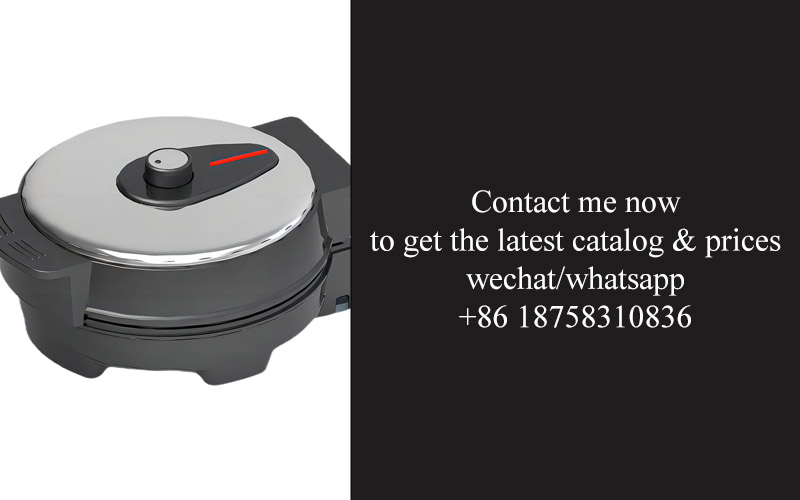
When it comes to selecting a classic waffle maker, the size and shape are crucial factors that can greatly influence your cooking experience. Here’s a detailed look at why these aspects matter:
The Perfect Fit for Your Kitchen SpaceImagine the frustration of buying a waffle maker that’s too large for your kitchen counter, or one that doesn’t fit neatly into your cabinets. Size is more than just a matter of convenience; it’s about ensuring that your waffle maker complements the layout of your kitchen. A smaller waffle maker can be a game-changer if you’re short on space or prefer a compact appliance. On the other hand, if you have ample room and enjoy hosting, a larger model with more surface area for waffles can be quite satisfying.
Square vs. Circular: A Taste in DesignWaffle makers come in a variety of shapes, but the two most common are square and circular. Each shape offers a unique aesthetic and cooking experience.
Square waffles are the iconic choice, often reminiscent of the classic Belgian waffles you’d find in diners or at breakfast buffets. The grid pattern on a square waffle maker typically results in a thicker, heartier waffle with deep pockets that hold ingredients beautifully. This shape is also versatile, allowing you to customize your waffles with various toppings and fillings.
Circular waffles, on the other hand, are a bit thinner and more delicate. They have a more uniform look and are perfect for a more refined, less fluffy waffle. The circular shape also means that you have a round edge on your waffle, which can be a fun twist on the traditional square waffle.
Standard vs. Extra-Large GridsThe grid design on a waffle maker can also vary in size. A standard grid will provide a decent amount of waffle per batch, but if you’re looking to feed a crowd or simply enjoy larger waffles, an extra-large grid might be the way to go. These larger grids can produce waffles that are twice the size of a standard batch, giving you more surface area for toppings and making the waffle experience more indulgent.
Single vs. Double SidedSome waffle makers are designed with a single-sided grid, while others have the grids on both sides. The double-sided models can be a bit bulkier but offer the advantage of a quicker cooking time since both sides are heated simultaneously. This means you can cook two waffles at once, perfect for a busy morning or a gathering.
Adjustable vs. Fixed PlatesAnother aspect to consider is whether you want adjustable or fixed plates. Adjustable plates can be moved closer together or further apart, which is great for making waffles of different thicknesses. Fixed plates, while less versatile, can sometimes be easier to clean and maintain.
Consider Your Cooking PreferencesYour choice in size and shape should align with how you like to cook and eat waffles. If you prefer a classic, thick Belgian waffle, a square waffle maker with a standard grid might be your best bet. However, if you’re into the thin, round waffles or enjoy experimenting with various toppings, a circular or extra-large waffle maker might be more to your liking.
Ultimately, the size and shape of your classic waffle maker should reflect your personal style and kitchen needs. Whether you’re a fan of the traditional square shape or intrigued by the unique circular design, the right waffle maker can transform your breakfast routine into a delightful culinary adventure.
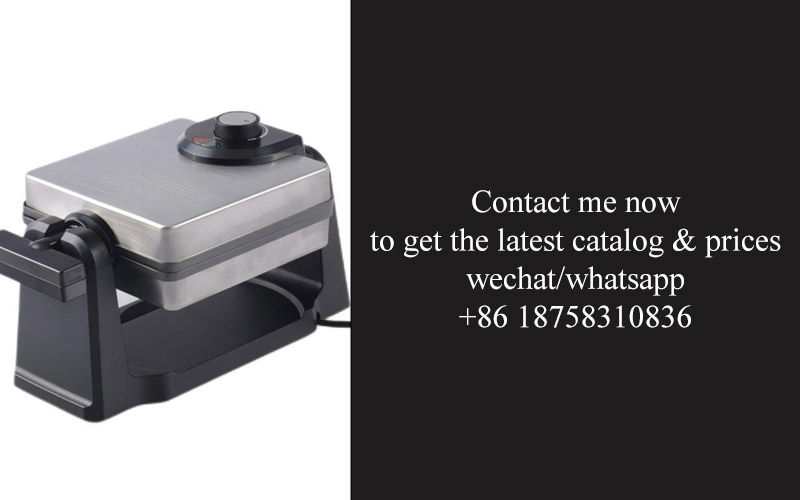
When it comes to choosing a classic waffle maker, one of the most crucial considerations is the power source. This aspect can significantly impact your cooking experience, from convenience to efficiency. Here’s a closer look at the different power source options available:
Electricity has long been the go-to power source for waffle makers, offering a seamless and reliable way to cook your waffles. Here’s what you need to know about electric models:
For those who prefer a more traditional approach or have limited access to electricity, a stovetop waffle maker might be the perfect choice. Here’s what you should consider:
Induction waffle makers are a newer addition to the market, offering a modern twist on the traditional electric model. Here’s what makes them unique:
Battery-Powered Waffle MakersFor those who want the convenience of a portable waffle maker without the need for an outlet, battery-powered models are a great option. Here’s what to consider:
Ultimately, the power source you choose for your classic waffle maker will depend on your lifestyle, cooking habits, and preferences. Whether you opt for the convenience of electricity, the traditional charm of a stovetop model, the precision of induction, or the portability of a battery-powered unit, each option has its own set of benefits that can enhance your waffle-making experience.
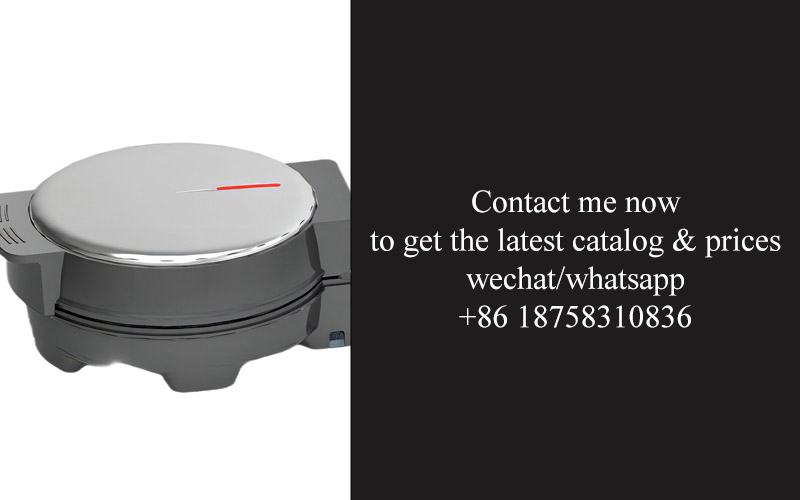
Choosing the right waffle maker can be a delightful yet nuanced endeavor, especially when it comes to the price range and the wealth of reviews available. Understanding these factors can help you make an informed decision that aligns with your budget and expectations.
Understanding the Price RangeWhen considering the price of a classic waffle maker, it’s important to note that there’s a broad spectrum of options out there. At the lower end of the scale, you might find models for as little as $20 to $30. These are typically budget-friendly and perfect for those who want a simple, no-frills appliance that can produce a decent waffle. However, they might lack some of the advanced features that more expensive models offer.
Mid-range waffle makers, priced between $50 and $100, often provide a balance of quality and functionality. They come with non-stick surfaces, adjustable temperature controls, and sometimes even additional features like a reversible plate or a timer. This price bracket is often where many consumers find the sweet spot between cost and performance.
For those looking for top-of-the-line waffle makers, prices can climb well into the $100 to $200 range. These premium models often boast of innovative designs, high-quality materials, and advanced features such as digital controls, non-stick coatings that last longer, and even built-in toasters. While they may be more expensive, these waffle makers are often built to last and can be a worthwhile investment for families or those who enjoy hosting breakfasts or brunches.
The Role of ReviewsOne of the most valuable resources when shopping for a waffle maker is the wealth of reviews available online. These come from real-life users who have purchased and used the product, giving you insights into the real-world performance of the appliance.
Reading reviews can provide a clearer picture of the waffle maker’s reliability, ease of use, and overall quality. Look for patterns in the feedback:
Consistency of Performance: Are users consistently pleased with the waffles produced by the maker? Are there reports of sticking, uneven cooking, or other performance issues?
Ease of Cleaning: Are users satisfied with how easy it is to clean the waffle maker? Some models may have non-stick coatings that make cleaning a breeze, while others might require more effort.
Durability: Do users report that the waffle maker holds up well over time? Are there any concerns about the longevity of the appliance?
Customer Service: If there are any issues, how does the manufacturer respond? Are users pleased with the customer service and warranty?
Additional Features: Are the features that the waffle maker offers worth the price? Do users find that these features enhance their experience?
When considering price range and reviews, it’s also wise to think about your personal preferences and needs. For example, if you’re a casual waffle eater, a mid-range model might be sufficient. But if you’re a serious waffle enthusiast or frequently host, investing in a high-quality, more expensive waffle maker could be a worthwhile choice.
Remember that the best waffle maker for someone else may not be the best for you. It’s all about finding the right balance between what you’re willing to pay, the features you value, and the feedback from those who have already made the purchase. With a careful blend of these factors, you can find a classic waffle maker that will bring joy to your kitchen and to your taste buds for years to come.